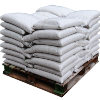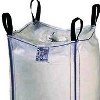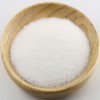| Anmol Chemicals is the pioneer manufacturers of Tartaric Acid, Pharmaceutical Excipients Food & Flavor chemicals in India. We offer Halal and Kosher Tartaric Acid made in an ISO9001, ISO22000 (FSSC22000) cGMP and GLP certified facility. Our group has several manufacturing facilities spread across the world, supported by toll manufacturers and representatives in UAE, Europe, Africa, USA, China and has several associated manufacturing facilities spread across India. All the Information on Physics, Chemistry, Applications, Uses and Technology on Manufacture of Tartaric Acid is in these pages. |
| The units in the group have one or more of the certifications like FDA GMP, ISO 9001, ISO 22000, HACCP, REACH, Kosher & Halal and DMF support is available. |





Tartaric Acid BP Ph Eur USP NF FCC Food Grade & Commercial Pure Manufacturers
Tartaric Acid CAS Numbe: 87-69-4 & 526-83-0, EC Number: 201-766-0, Molecular Formula: C4H6O6, Molecular Weight: 150.1
Tartaric Acid SDS GHS, MSDS Sheet of Manufacturers
Tartaric Acid
BP USP FCC Food Grade & Commercial Pure

English Tartaric Acid Calcium-Magnesium-Potassium-Sodium-Tartrate
Arabic حمض الطرطريك كالسيوم - مغنسيوم - بوتاسيوم - صوديوم - طرطرات
Spanish Ácido Tartárico Calcio-Magnesio-Potasio-Sodio-Tartrato
Portuguese Ácido tartárico cálcio-magnésio-potássio-tartarato de sódio
French Acide tartrique Calcium-Magnésium-Potassium-Sodium-Tartrate
Dutch Wijnsteenzuur Calcium-Magnesium-Kalium-Natrium-tartraat
German Weinsäure Calcium-Magnesium-Kalium-Natrium-Tartrat
Italian Acido Tartarico Calcio-Magnesio-Potassio-Sodio-Tartrato
Tartaric acid is a white crystalline organic acid that occurs naturally in many plants, most notably in grapes. The acid itself is added to foods as an antioxidant and to impart its distinctive sour taste. Tartaric is an alpha-hydroxy-carboxylic acid, is diprotic and aldaric in acid characteristics, and is a dihydroxyl derivative of succinic acid
The naturally occurring form of the acid is L-(+)-tartaric acid or levotartaric acid. The mirror-image (enantiomeric) form, dextrotartaric acid or D-(-)-tartaric acid, and the achiral form, mesotartaric acid, can be made artificially.
Food and Drug Administration lists tartaric acid in the Generally Recognized As Safe or GRAS category(9) which means this product can be freely used as an additive in processed foods.
Tartaric Acid BP Ph Eur Grade Specifications
C4H6O6 --- 150.1--- CAS Number 87-69-4
Ph Eur
DEFINITION
(2R,3R)-2,3-Dihydroxybutanedioic acid.
Content: 99.5 per cent to 101.0 per cent (dried substance).
CHARACTERS
Appearance: White or almost white, crystalline powder or colourless crystals.
Solubility: Very soluble in water, freely soluble in ethanol (96 per cent).
IDENTIFICATION
A. Solution S (see Tests) is strongly acid.
B. It gives the reactions of tartrates.
TESTS
Solution S: Dissolve 5.0 g in distilled water and dilute to 50 ml with the same solvent.
Appearance of solution: Solution S is clear and not more intensely coloured than reference solution.
Specific optical rotation: + 12.0 to + 12.8 (dried substance)
Oxalic acid: Maximum 350 ppm, calculated as anhydrous oxalic acid.
Chlorides: Maximum 100 ppm.
Sulphates: Maximum 150 ppm.
Calcium: Maximum 200 ppm.
Heavy metals: Maximum 10 ppm.
Loss on drying: Maximum 0.2 per cent, determined on 1.000 g by drying in an oven at 105 °C
Sulphated ash: Maximum 0.1 per cent, determined on 1.0 g.
ASSAY
Dissolve 0.650 g in 25 ml of water. Titrate with 1 M sodium hydroxide using 0.5 ml of
phenolphthalein solution as indicator, until a pink colour is obtained.
1 ml of 1 M sodium hydroxide is equivalent to 75.05 mg of C4H6O6.
Tartaric Acid USP NF Grade Specifications
C4H6O6 - 150.09
Butanedioic acid, 2,3-dihydroxy-; Butanedioic acid, 2,3-dihydroxy-, [R-(R*,R*)]-.
Tartaric acid; L -(+)-Tartaric acid [CAS Number 526-83-0] and [CAS Number 87-69-4].
Tartaric Acid, dried over phosphorus pentoxide for 3 hours, contains not less than 99.7 percent and not more than 100.5 percent of C4H6O6.
Identification:
A: It responds to the tests for Tartrate.
B: When ignited, it gradually decomposes, emitting an odor resembling that of burning sugar
(distinction from citric acid).
Specific rotation: between +12.0 and +13.0 .
Test solution: 200 mg per mL, in water.
Loss on drying: Dry it over phosphorus pentoxide for 3 hours: it loses not more than 0.5% of its weight.
Residue on ignition: not more than 0.1%.
Limit of oxalate: Nearly neutralize 10 mL of a solution of it (1 in 10) with 6 N ammonium hydroxide, and add 10 mL of calcium sulfate TS: no turbidity is produced.
Sulfate: To 10 mL of a solution (1 in 100) add 3 drops of hydrochloric acid and 1 mL of barium chloride: no turbidity is produced.
Heavy metals: 0.001%.
Assay: Place about 2 g of Tartaric Acid, previously dried and accurately weighed, in a conical flask. Dissolve it in 40 mL of water, add phenolphthalein TS, and titrate with 1 N sodium hydroxide VS. Each mL of 1 N sodium hydroxide is equivalent to 75.04 mg of C4H6O6.
Specifications of Tartaric Acid FCC Food Grade
L(+)-Tartaric Acid
C4H6O6 Formula wt 150.09
CAS 87-69-4
FEMA: 3044
DESCRIPTION
Tartaric Acid occurs as colorless or translucent crystals or as a white, fine to granular, crystalline powder. It is stable in air. One gram dissolves in 0.8 mL of water at 25°, in about 0.5 mL of boiling water, and in about 3 mL of alcohol. Its solutions are dextrorotatory.
Function: Acidifier; sequestrant; flavoring agent.
REQUIREMENTS
Identification :A sample solution gives positive tests for Tartrate.
Assay: Not less than 99.7% and not more than 100.5% of C4H6O6 after drying.
Lead: Not more than 2 mg/kg.
Loss on Drying: Not more than 0.5%.
Optical (Specific) Rotation: Between +12.0° and +13.0°.
Oxalate: Passes test.
Residue on Ignition: Not more than 0.05%.
Sulfate: Passes test.
Specifications of Tartaric Acid ACS Analytical Reagent Grade
2,3-Dihydroxybutanedioic Acid
HOOC(CHOH)2COOH
Formula Wt 150.0
CAS Number 87-69-4
REQUIREMENTS
Assay: Not less than 99.0%
MAXIMUM ALLOWABLE
Insoluble matter: 0.005%
Residue after ignition: 0.02%
Chloride (Cl): 0.001%
Oxalate (C2O4): Passes test
Phosphate (PO4): 0.001%
Sulfur compounds (as SO4): 0.002%
Heavy metals (as Pb): 5 ppm
Iron (Fe): 5 ppm
For Original Monographs of Stearic Acid, please check with the web-pages of the Pharmacopoeia.
We also manufacture Calcium Tartrate, Magnesium Tartrate, Potassium Bitartrate, Potassium Sodium Tartrate and Sodium Tartrate.
Tartaric Acid Manufacturers
Anmol Chemicals
S-8, SARIFA MANSION, 2ND FLANK ROAD, CHINCHBUNDER, MUMBAI 400009, INDIA
TEL: (OFFICE) 91-22-23770100, 23726950, 23774610, 23723564. FAX: 91-22-23728264
e-mail: anmolc@mtnl.net.in

Fracture Diverting Agent, Ferric Chloride Hexahydrate, Malic Acid, Skatole & Indole, Potassium Bicarbonate & Carbonate, Sodium Caprylate, Steartic Acid, Tartartric Acid
Exports to USA, Canada, UAE, Dubai, South Africa, Tanzania, Kenya, Nigeria, Egypt, Uganda, Turkey, Mexico, Brazil, Chile, Argentina, Europe Netherlands, Italy, Spain, Germany, Portugal, France, Malaysia, Indonesia, Thailand, Russia, Korea, Japan, etc.
Copyright and Usual Disclaimer is Applicable, February 22, 2022 .